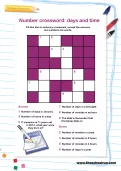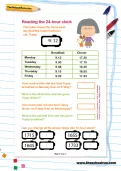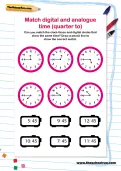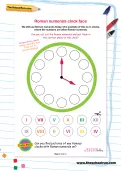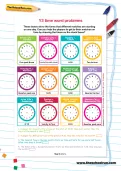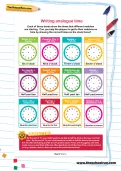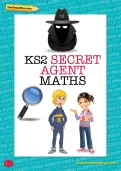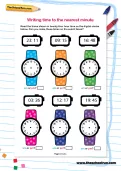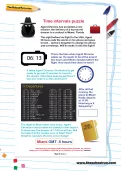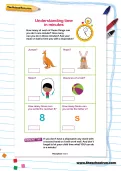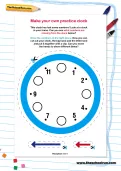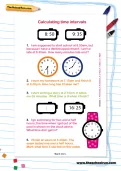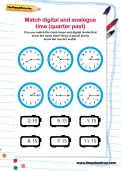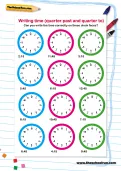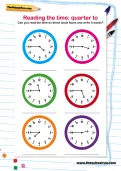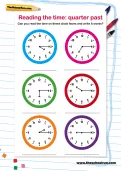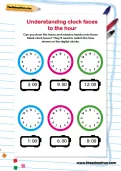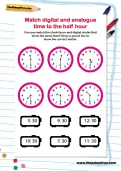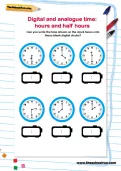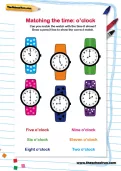We still use Roman numerals today. One example of this is on clocks, where the numbers are often Roman numerals. Can you find pictures of any famous clocks with Roman numerals on?
or
Register to add to your saved resources
Already a subscriber? to view this content.
These boxes show the times that different matches are starting on one day. Can you help the players to get to their matches on time by drawing the times on the clock faces?
or
Register to add to your saved resources
Already a subscriber? to view this content.
Each of these boxes show the times that different matches are starting. Can you help the players to get to their matches on time by drawing the correct times on the clock faces?
or
Register to add to your saved resources
Already a subscriber? to view this content.
Fill this like an ordinary crossword, except the answers are numbers not words.
or
Register to add to your saved resources
Are you ready to uncover dastardly deeds and confront super-evil villains, armed just with your mathematical skills and lots of courage? Join Oscar Octo and Penelope Penta, agents for the Geometric World Spy Agency, to track down a mysterious nemesis. There'll be a few (ok, a load!) of number puzzles to solve along the way, all designed to challenge KS2 mathematicians to the limit. Will you accept your mission?
or
Register to add to your saved resources
Already a subscriber? to view this content.
Read the times shown in twenty-four hour time on the digital clocks. Can you make these times on the watch faces?
or
Register to add to your saved resources
Agent Chronos has accepted a new mission: the delivery of a top-secret dossier to a contact in Miami, Florida. The night before his flight to the USA, Agent Chronos sets the alarm on his phone and goes to bed... but he’s forgotten to charge his phone and oversleeps. Will he make it onto the flight?
or
Register to add to your saved resources
Already a subscriber? to view this content.
A KS2 maths worksheet created by an experienced teacher to help your child learn how to tell the time using the 24-hour clock.
or
Register to add to your saved resources
How many of each of these things can you do in one minute? How many can you do in three minutes? Ask your mum or dad to time you with a stopwatch!
or
Register to add to your saved resources
Already a subscriber? to view this content.
This clock has lost some numbers! Look at a clock in your home. Can you see what numbers are missing from the clock below? Draw the numbers in the right place. Now you can cut out your clock, the big hand and the little hand and put it together with a clip. Can you move the hands to show different times?
or
Register to add to your saved resources
Look at these clocks and see if you can work out the answers to these questions. You are going to be calculating the time intervals.
or
Register to add to your saved resources
Already a subscriber? to view this content.
Practise telling the time to forty-five minutes past the hour with this time worksheet. Your child will need to match the same 'quarter to' the hour times shown on a digital and analogue clock.
or
Register to add to your saved resources
In Year 2 children learn to tell the time to quarter past and quarter to the hour. Help them practise with this simple matching worksheet.
or
Register to add to your saved resources
Already a subscriber? to view this content.
Help your child revise time-telling skills with this simple worksheet. Can they write 'quarter past' and 'quarter to' correctly on the clock faces?
or
Register to add to your saved resources
Already a subscriber? to view this content.
In Y2 your child will learn to read the time to 15 and 45 minutes past the hour. Help them practise 'quarter to' with this worksheet.
or
Register to add to your saved resources
Already a subscriber? to view this content.
Telling-the-time worksheet created by a primary school teacher to help your Year 2 child read quarter past the hour.
or
Register to add to your saved resources
Time-telling practice for Y1 children: reading and writing the time to the hour on blank clock faces. Remind them to check the length of their hours and minutes hands!
or
Register to add to your saved resources
Already a subscriber? to view this content.
Can your child read the time on a digital clock and a clock face? Help them match digital and analogue time notation with this simple worksheet for Y1 students.
or
Register to add to your saved resources
Help your child practise telling the time on a digital and analogue clock with this matching activity. They will learn to read and write time to the hour and half hour in Year 1.
or
Register to add to your saved resources
Already a subscriber? to view this content.
Can your child match these watches with 'o'clock' they show? A simple worksheet to help boost their confidence in telling the time.
or
Register to add to your saved resources
Already a subscriber? to view this content.
